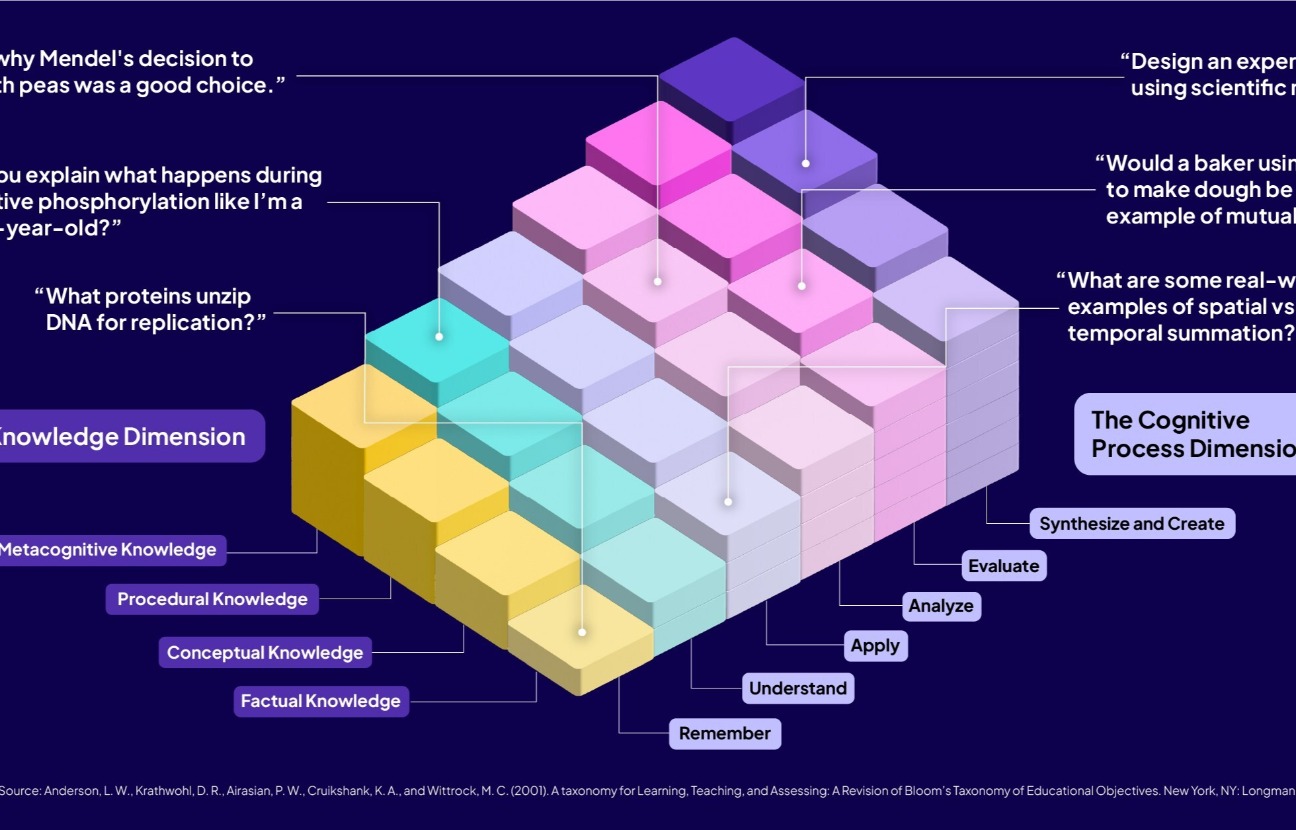AI and Critical Thinking
How Pearson Is Using Generative Technology to Deepen Learning
Artificial intelligence often sparks concern when it comes to education. One common fear is that over-reliance on AI might dull critical thinking or creativity. But new research from educational publisher Pearson challenges that assumption — showing that when used purposefully, AI can in fact stimulate deeper thinking, encourage analytical reasoning, and support better learning outcomes.
In a new study titled "Asking to Learn: What Student Queries to Generative AI Reveal About Cognitive Engagement", Pearson analyzed nearly 130,000 AI-generated queries from 8,700 college students using its generative AI study assistant embedded in the textbook Campbell Biology. The findings offer a strong counter-narrative to the idea that AI promotes shallow learning.
Instead, the study found that one-third of all queries reflected higher-order thinking, as defined by Bloom’s Revised Taxonomy — a foundational learning science framework that classifies cognitive tasks from basic recall to more complex processes like applying, analyzing, and evaluating.
“Students are asking insightful, analytical questions that reflect genuine attempts to understand and interrogate what they're learning,” said Dr. Muireann Hendriksen, Principal Learning Scientist and lead author of the study. “This data supports the idea that when AI tools are purpose-built for learning, they can drive meaningful cognitive engagement.”
From Insights to Innovation: Pearson’s “Go Deeper” Feature
Inspired by this research, Pearson introduced Go Deeper — a new enhancement to its AI study tools that nudges students toward more complex thinking.
Here’s how it works: When a student asks a question — say, “What is photosynthesis?” — the AI provides a clear answer, but then follows up with a deeper prompt. It might ask the student to compare photosynthesis to cellular respiration, explain it in the context of plant biology, or apply the concept to real-world ecological challenges.
This transforms a simple, surface-level query into a multi-step cognitive journey — guiding students from remembering and understanding to analyzing and applying.
“Usage data shows that when students have the right tools, they don’t just learn better — they think deeper,” said Tony Prentice, Chief Product Officer at Pearson. “Go Deeper was built in direct response to how students naturally interact with AI. By building on their curiosity, we help them strengthen the critical thinking skills they’ll need both in school and in life.”
Why This Matters: AI Can Be a Partner in Thinking — Not Just a Shortcut
The potential of agentic AI in education lies in its ability to be more than just a digital answer machine. When carefully designed and backed by learning science, AI tools can function like intelligent study partners — prompting, challenging, and scaffolding student thinking in real time.
Pearson’s use of AI aligns with a growing movement to see generative AI not as a threat to learning but as a cognitive amplifier. From writing tutors that help students plan and revise essays, to medical study tools that simulate diagnostic reasoning, AI is increasingly being used to support, not replace, critical human thought.
Beyond Biology: Pearson’s Expanding AI Footprint
Pearson’s AI efforts extend well beyond Go Deeper:
-
In K-12 education, a new AI tool automates administrative tasks so teachers can spend more time engaging with students.
-
In nursing education, AI study tools are helping students prepare for licensure exams and easing the burden on instructors in high-enrollment courses.
-
For English instruction, the Smart Lesson Generator produces curriculum-aligned lesson plans in seconds — helping educators tailor content to diverse learner needs.
-
In higher education, research across four semesters shows students increasingly rely on AI for strategic studying, with growing faculty support.
Importantly, Pearson emphasizes that all its AI tools are informed by learning science, reviewed by experts, and designed with responsible AI practices in mind. With more than 80% of its products now digital, Pearson is clearly positioning itself as a leader in AI-driven, research-based education.
Conclusion: From Question to Insight
Pearson’s work illustrates a powerful point: AI, when used with intention, can deepen rather than diminish student thinking. By guiding learners through layered questions and nudging them beyond simple answers, tools like Go Deeper show that generative AI can be an ally in building the critical thinking skills our future workforce needs.
As AI becomes increasingly embedded in both education and the workplace, how we design and use these tools will shape not just what we learn — but how we think.
